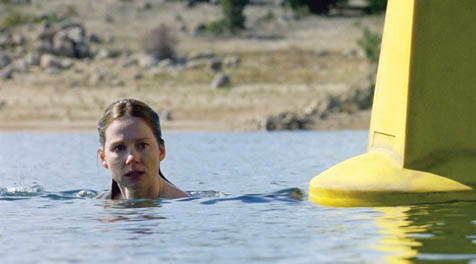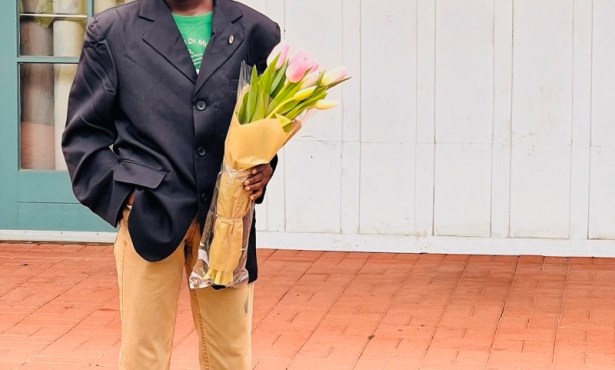Jindabyne
A Bad Day Fishing

Jindabyne. Gabriel Byrne, Laura Linney, and Chris Haywood star in a film written by Beatrix Christian, based on the short story by Raymond Carver, and directed by Ray Lawrence.
Once upon a time, Australia was the mystical capital of the cinematic world. Films like Nicolas Roeg’s Walkabout, Peter Weir’s Picnic at Hanging Rock, and even Philip Kaufman’s pastiche-y blockbuster The Right Stuff featured the didgeridoo-haunted outback for woo-woo moments.
In a way, Jindabyne sets out to reverse that trend. Here the enigmas are all in the human heart and it is nature’s misfortune to become the place where these scary inconsistencies arise. Power lines, jet contrails, and gas stations are major visual motifs of the film, which tells the tale of four men who have gone fishing and discover the naked body of a woman floating in a river. What happens (or doesn’t happen) next sets the tone for unraveling the old social contract. It’s trs subtle and yet Shakespearian, particularly when it becomes obvious that the times are completely out of joint in the little village of Jindabyne and it’s up to a kinda crazy woman to set things straight.
So much time is spent setting up a mood of pensive ominousness, though, that the results seem anticlimactic. (I know, it’s supposed to be slow, but that doesn’t make it rewarding.) And the visual style of the film seems carelessly considered. The first half is over-lit, the burnt-out light washing everything dry. The second half is dark and foreboding. Both seem at odds with the story that’s being told. Gabriel Byrne and Laura Linney may be fine actors but why import a clearly American woman and an Irish man into the mix? And why does the music sound like it’s from Babel and Byrne’s mother look like Jimmy Carter in drag? There’s a big difference between ambiguities ripe for exploring and just downright puzzling stuff.
Bottom line, mate? The mysteries of Australia seem a little more prosaic after watching Jindabyne. Rather than beguiling dark magic, the film seems ultimately to be about tolerance and the environment and proper daycare for children. All commendable stuff, but it’s hardly enough to interrupt the old dreamtime.
In a way, Jindabyne sets out to reverse that trend. Here the enigmas are all in the human heart and it is nature’s misfortune to become the place where these scary inconsistencies arise. Power lines, jet contrails, and gas stations are major visual motifs of the film, which tells the tale of four men who have gone fishing and discover the naked body of a woman floating in a river. What happens (or doesn’t happen) next sets the tone for unraveling the old social contract. It’s trs subtle and yet Shakespearian, particularly when it becomes obvious that the times are completely out of joint in the little village of Jindabyne and it’s up to a kinda crazy woman to set things straight.
So much time is spent setting up a mood of pensive ominousness, though, that the results seem anticlimactic. (I know, it’s supposed to be slow, but that doesn’t make it rewarding.) And the visual style of the film seems carelessly considered. The first half is over-lit, the burnt-out light washing everything dry. The second half is dark and foreboding. Both seem at odds with the story that’s being told. Gabriel Byrne and Laura Linney may be fine actors but why import a clearly American woman and an Irish man into the mix? And why does the music sound like it’s from Babel and Byrne’s mother look like Jimmy Carter in drag? There’s a big difference between ambiguities ripe for exploring and just downright puzzling stuff.
Bottom line, mate? The mysteries of Australia seem a little more prosaic after watching Jindabyne. Rather than beguiling dark magic, the film seems ultimately to be about tolerance and the environment and proper daycare for children. All commendable stuff, but it’s hardly enough to interrupt the old dreamtime.



